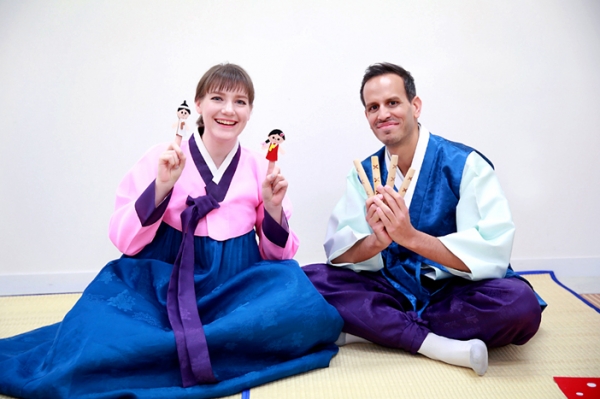
Seollal, Lunar New Year’s Day, is one of Korea’s main holidays. The holiday takes place on the first day of the new year according to the lunar calendar and serves as a time for people to greet each other with words of blessing for the year ahead. During the holiday period, Koreans also participate in ancestral memorial services, bow to their elders, and play traditional games. To learn more about these customs, follow along with Kayla and Sebastian as they show you different experiences you can try out yourself at home this season!
Korean cooking: tteokguk (떡국) & jeon (전)
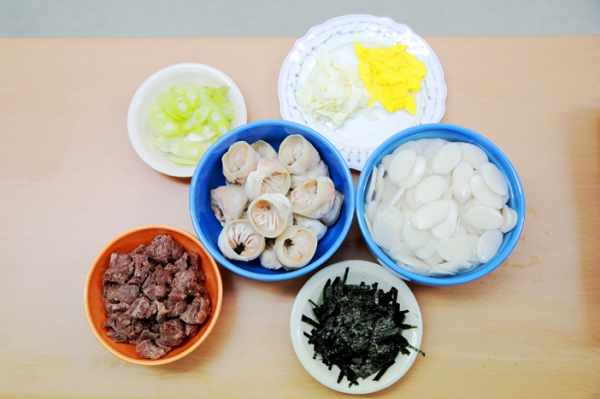
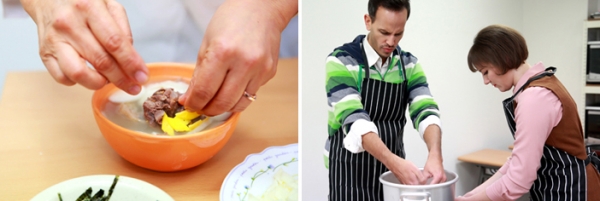
The first part of Kayla and Sebastian’s Seollal experience is to prepare a tasty lunch of tteokguk (rice cake soup). Tteokguk is one of Korea’s original dishes, and is traditionally eaten for the New Year. The dish is made by boiling thinly sliced white rice cakes in a clear soybean soup. Before eating, each bowl is garnished with meat, green onion, and egg; mandu (dumplings) can also be added for a more filling meal.
Be sure to follow this simple tip to make the tteokguk taste even better if you try it at home! Before putting the rice cakes in the soup to boil, wash them with cold water and let them soak for about 30 minutes. This will make the rice cakes softer, the boiling time shorter, and give the soup a clear taste. After they have soaked in the cold water, put the rice cakes in the boiling soup. To finalize your dish, artfully arrange the garnish for a dish as beautiful as it is tasty.
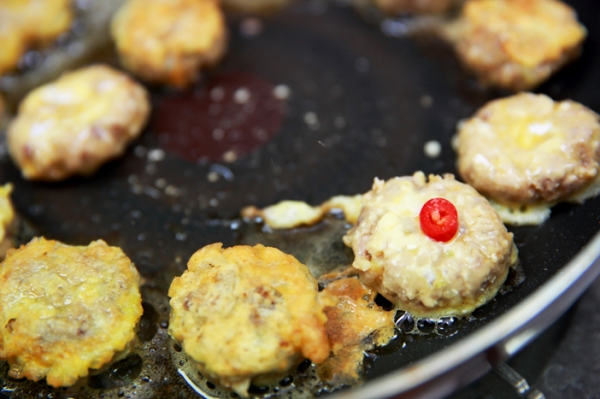
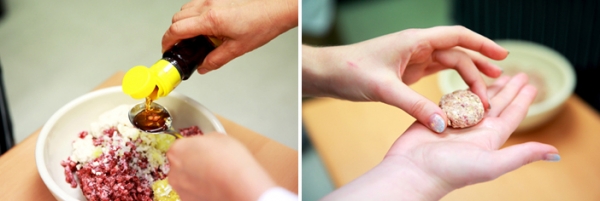
Kayla and Sebastian also prepare two types of jeon (savory pancakes) to go with the tteokguk. Jeon is made by lightly coating vegetables, meat, or slices of fish in flour and an egg wash before frying in a small amount of oil. Jeon can be eaten at any time, but it is customary to have them at Seollal and Chuseok (Korean Thanksgiving Day). The name of each jeon is based on the main ingredient, such as gul jeon (batter-fried oyster), beoseot jeon (batter-fried mushroom), or hobak jeon (batter-fried zucchini). For Seollal, the most commonly prepared jeon are dongtae jeon (batter-fried pollack fillets) and yugwonjeon (batter-fried meatballs).
Dongtae jeon is made by warming thinly sliced dried pollack before marinating them in a mix of salt, pepper, and clear rice wine. After dabbing off any remaining moisture, the marinated slices are lightly coated with flour, dipped in an egg wash, and pan-fried over mid-low heat. Yugwonjeon on the other hand requires a bit more preparation. The meatball is made from mixing ground beef, tofu, garlic, and other seasoning ingredients together; the key to good yugwonjeon is making sure there is very little blood and water remaining in the meat and tofu, respectively. After mixing the ingredients fully together, it is rolled into small balls, lightly flattened in the palm of one’s hand, and then follows the same steps as dongtae jeon: flour, egg wash, fry! In order to fully cook the inside of the meatballs, keep the heat low.
Wearing hanbok (한복)
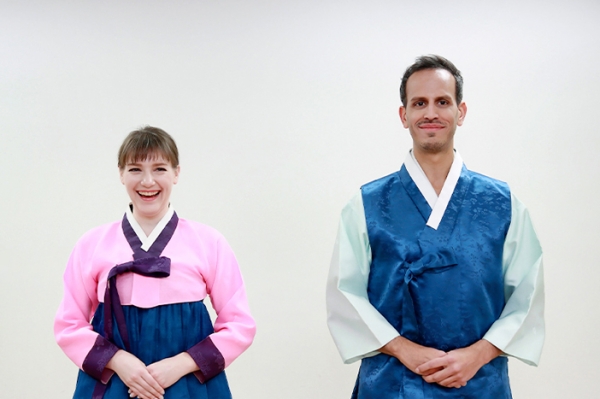
Another key part of Seollal is wearing hanbok! Korea’s traditional clothing, the design of hanbok has largely remained unchanged since the Joseon dynasty. While modern styles and imitations of hanbok have seen a rise in popularity recently, traditional hanbok is worn on cultural holidays and during memorial services. Traditional hanbok can be a bit tricky to wear, as the clothes are quite billowy.
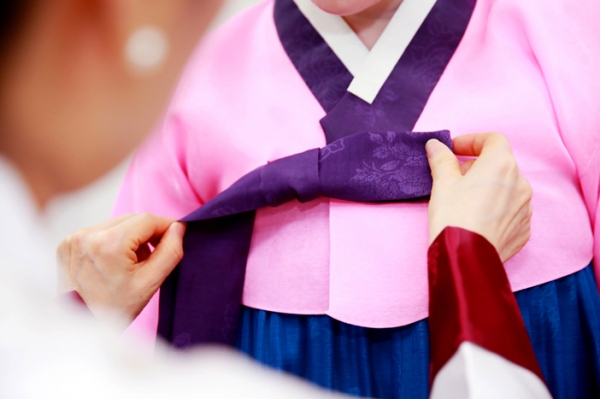
The most difficult step to wearing hanbok is correctly tying the goreum (ribbon). The ribbon keeps the jacket closed and in place, so it is quite important! While you could just make any type of ribbon or even a simple knot, doing it the proper way creates a beautifully finished image. To make the proper ribbon, cross the right-hand goreum over the top of the left before pulling it back up through the two to tie them together. At this point, place your left hand over the tie and wrap the top goreum once around your hand, down the back and up the palm. With your right hand, create a ribbon shape with the hanging goreum and pass it through the goreum looped over your left hand. After this, simply tighten and adjust to make it picture perfect. If you have tied the goreum correctly, there should only be about a 5-centimeter difference in the two goreum ends.
Playing yunnori (윷놀이)
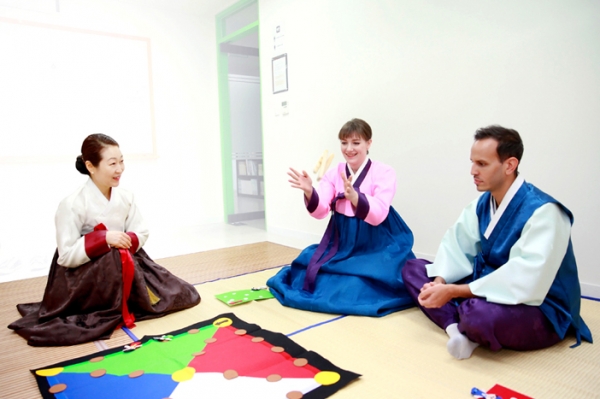
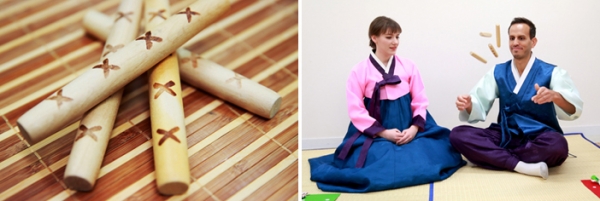
The last experience for Seollal is playing yunnori, a folk game that can be played by all! The game can be played with as few as two people; with more people, the players divide into two teams. Each team is given four game markers they must move around the board. The number of spaces they can move is based on the results of throwing four sticks in the air. The sticks are made of chestnut wood and have one flat side, while the opposite rounded side is marked with “X”s. The first team to get all four game pieces around the board wins!
Source: Imagine Your Korea (english.visitkorea.or.kr)


